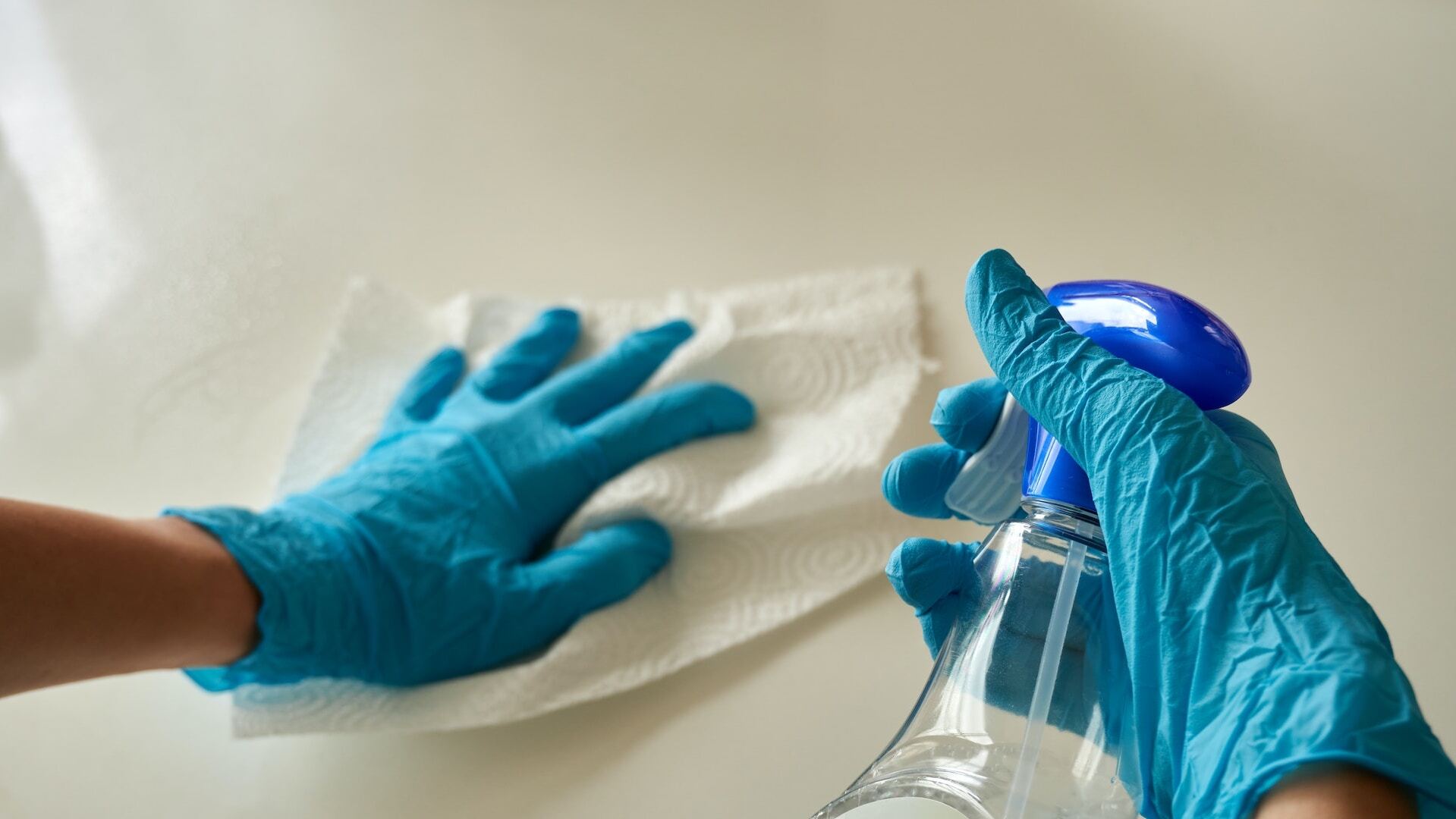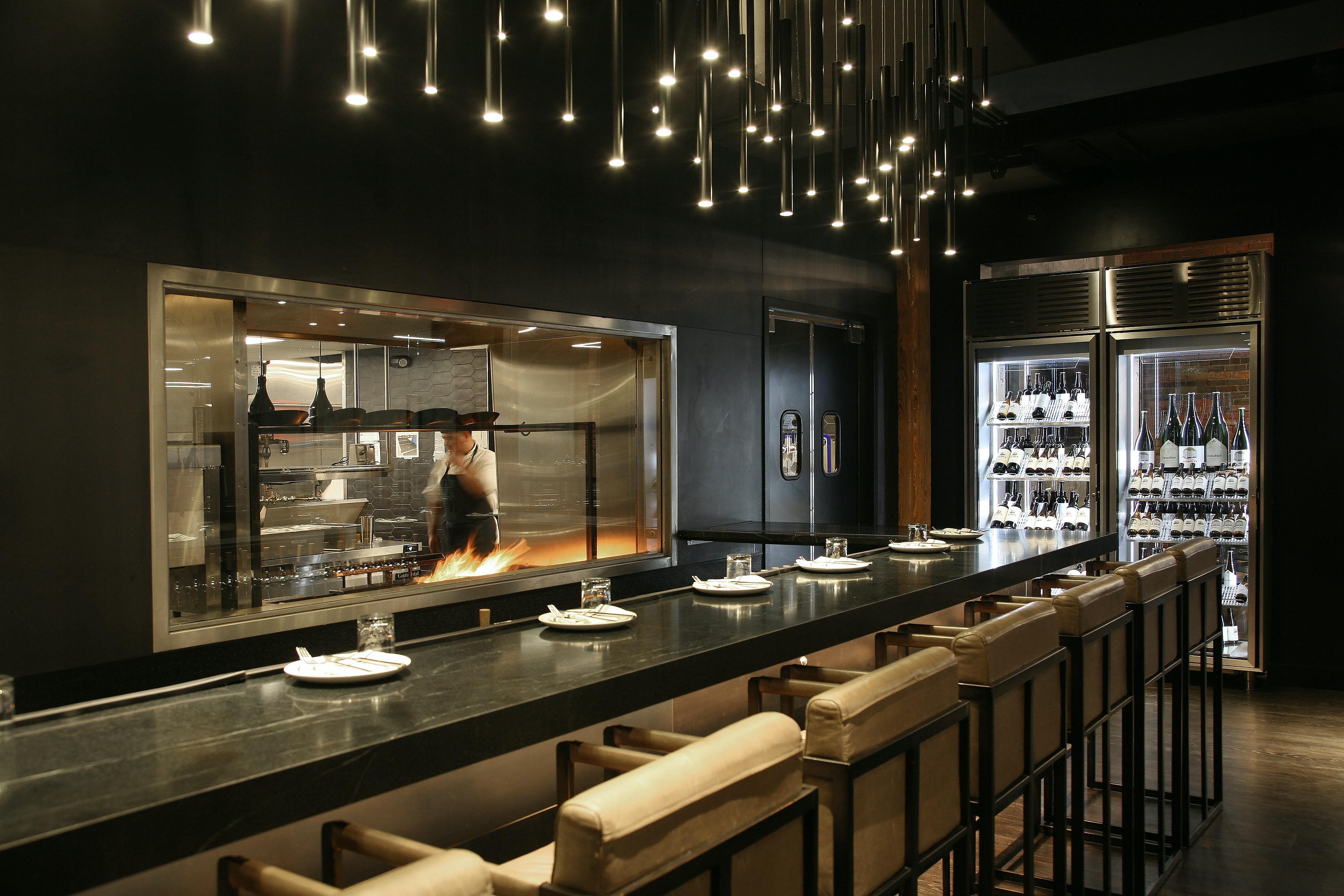
Commercial Kitchen Cleaning Checklist Template: How to Clean a Commercial Kitchen
Find out why a commercial kitchen checklist is a great tool to keep you on top of cleaning and improve general health and safety in your restaurant.
Marcel DeerAuthor

Restaurant Cleaning Checklist
Download the Restaurant Cleaning Checklist, created in partnership with RestaurantSupply.com, to keep track of the cleaning tasks that need to be completed in your restaurant.
Get Free Download | Built for Restaurants
| Built for RestaurantsCommercial Kitchen Cleaning Checklist
Cleanliness is hugely important for restaurateurs. While your front of house can be as clean as a whistle, any slack in cleanliness or hygiene in the kitchen can still make its way through to your diners and really turn them off. You know what we’re talking about – greasy plates, spotty glasses, and potential contamination in food.
Keeping your commercial kitchen immaculate helps prevent the spread of viruses and bacteria, cross-contamination, and damaging crackdowns or even closures by health inspectors. Additionally, of course, it keeps your customers coming back.
A lack of cleanliness can kill your business. But it’s completely preventable if you have an excellent cleaning routine, and what better way to do that than by using commercial kitchen cleaning checklists?
These simple tools give your cleaning routine structure and direction. They give the staff responsibilities and accountability, and all this without micro-managing. So what are these checklists all about, and how do they improve your business? That’s what we’re going to look at here.
In this article, you’ll learn:
Why commercial kitchen checklists are so valuable
What daily, weekly, and monthly items these checklists should contain
Which supplies and cleaning products you need to keep things spotless
Tips to keep your commercial kitchen as clean as can be
Ready? Let's dive in.
The Importance of a Commercial Kitchen Cleaning Checklist
Think about the way your kitchen gets cleaned right now. You’ve probably trained staff and then let veterans show new people the ropes, but important tasks may have been lost in translation. Rather than organizing and prioritizing tasks into daily, weekly, and monthly items, cleaning might be done on an ad hoc basis. And who keeps track of who is supposed to do what? Do you have a system of accountability to make sure cleaning tasks are appropriately shared and all of them are completed?
With checklists, your kitchen cleaning procedures can be standardized to make cleaning efficient, organized, and fair. For your business, kitchen cleanliness can help prevent contamination and disease. The CDC estimates that 48 million people get sick from food each year, and you definitely don’t want your kitchen to be responsible for even one of those cases. Having weekly and monthly deep cleaning items also ensures that you can stay on top of cleanliness and not let important tasks fall by the wayside.
But staff also truly benefit when you institute cleaning checklists.
A checklist is a simple way to save time by letting everyone know clearly what they’re responsible for and how often to do it. Initialing adds accountability, which helps show that cleaning task distribution is fair and everyone is pulling their weight. Checking things off the list is a way to let staff feel accomplished when they get an unsavory task out of the way. Finally, the checklist keeps bosses from having to micro-manage by laying out all necessary tasks clearly.
Commercial Kitchen Cleaning Checklists
Cleaning checklists can include tools and supplies in addition to cleaning tasks. These tasks can be organized into daily, weekly, and monthly categories for further organization.
Cleaning Supplies Needed
For commercial kitchen cleaning, here are some supplies you might need:
Surface and glass spray cleaners
Specialty cleaners for larger equipment (dishwasher, range, oven, ice machine, etc.)
Sponges and scourers
Degreaser
Disinfectants and sanitizer solution
Clean cloths
Mop, broom, and dustpan
Mop and bucket of hot, soapy water
Cleaning gloves
Restaurant Cleaning Checklist
Download the Restaurant Cleaning Checklist, created in partnership with RestaurantSupply.com, to keep track of the cleaning tasks that need to be completed in your restaurant.

Daily Cleaning Tasks
During the Shift
These are some of the most common items you’ll find on a list to do at the start or during a shift:
Clean all surfaces before starting prep
Sanitize surfaces between prepping different foods
Properly wrap, date, and label any foods put in containers
Scrape down griddles and grills between uses
Clean up big spills or splatters
Ensure proper temperatures of hot and cold food holding units
Sanitize surfaces after being touched by potentially contaminating foods (e.g. raw meat)
Fill, run, and empty the dishwasher
Wash and return food prep equipment between runs of dishes
Mop the floor to prevent slipping
When Closing Out
A big cleaning is necessary before closing out for the day. Important items can include:
Clean and sanitize the washing station and sinks
Lift up and clean floor mats
Take out the trash and recycling
Clean the grills and griddles and empty drip trays
Sanitize any hot or cold food-holding units
Clean equipment and tools, and clean and re-season pots/pans
Degrease and sanitize all surfaces
Sweep and mop the floors
Wipe and sanitize food prep surfaces and polish all stainless steel surfaces
Weekly Cleaning Tasks
You’ll want to save more intensive cleaning items to be done weekly. These can include:
Empty shelves and clean the surfaces of walk-in areas
Dispose of any ingredients that are no longer fresh
De-lime coffee makers
Ensure floor and sink drains are clean and flowing
Clean grease traps
Check any pest prevention traps and clean or replace them as needed
Replace the fryer oil
Clean insides and outsides of ovens and steamers
Clean fan guards, vents, and hoods
Wipe down and sanitize doors
Monthly
Some items need to be done only once a month. They can include:
Fully empty and deep clean the walk-in
Deep clean fan, vents, and hoods
Deep clean the floor
Clean out drains and remove any blockage
Clean inside microwave
Clean inside dishwasher
Wash walls and ceilings
Clean out all ice and drink machines
Empty and clean the insides of fridges and freezers
Re-stock cleaning and first-aid items as needed
Server Side Work Checklist Template
This Excel document template will help you create a Server Side Work Checklist for your restaurant — and train staff more effectively.

Commercial Kitchen Cleaning Tips
Checklists are excellent tools to organize and streamline your commercial kitchen cleaning procedures. They take the pressure off managing cleaning tasks and can allow you more time to focus on how to keep your restaurant as clean as can be. Here are some tips to help you do just that.
Tip #1: Focus on Preventing Foodborne Illness
The last thing you want to do is make your customers sick. So, focus on preventing contamination of food and dishes before they even leave the kitchen. Keep hot food hot and cold food cold. Anything left in the danger zone (40 - 140 degrees °F) creates a risk. Keep pests away from your food stores. Avoid cross-contamination from potentially dangerous foods by keeping ingredients separate and surfaces sanitized. And be stringent about employee hygiene. Remember the 20-second hand washing rule and keep sick staff out of the kitchen.
Tip #2: Check the Health Department’s Guidelines
Every restaurant has to deal with health inspections. If you see them as a useful outside resource to help you maintain high standards, you’ll start to appreciate their visits rather than dread them.
Make inspectors and your customers happy by keeping your kitchen clean and pest-free. Food should always be properly stored at held at the right temperatures, and ingredients should be tossed when they’re no longer fresh. Proper staff hygiene and safe food prep can help you avoid cross-contamination, and following a kitchen cleaning checklist can help you stay in the health inspector’s good books.
Tip #3: Prevent Pests
Pests like mice and cockroaches can contaminate food and cost you money by invading your food stores. Keep them managed by:
Keeping surfaces clean of food residues
Keeping food in air-tight containers and not leaving any food out overnight
Getting trash out of the kitchen regularly
Cleaning and replacing pest traps as often as needed
Being vigilant about checking for warning signs like droppings or nests and taking action as soon as possible
Tip #4: Train Staff to Prioritize Food Safety
Educating and training your entire staff, front- and back-of-house, in proper hygiene, food safety, and overall cleanliness is key to making sure every guest has a safe, sanitary dining experience.
Restaurant training is not a one-time thing, especially when it comes to food safety. Keep your staff trained and regularly updated on your cleanliness policies. Let them know just how crucial it is that things stay safe and clean.
It’s important to see that everyone is doing things the way they should be done every day, not just the days immediately after a training session.
Learn how to build (and rebuild) your team with Joy from Busboys and Poets.
Your Guide to: Restaurant Staffing

Tip #5: Deliver an Enjoyable Experience for Guests
Inspect your restaurant’s cleanliness as though you were a customer. What can you see that needs improvement? Or even better, ask or hire someone without bias to do this for you. Find out which items to improve stem from the kitchen and institute appropriate new cleaning policies to address them.
Remember that no matter how good your food or speedy your service is, customers will likely not return to a restaurant they think is dirty.
Despite all the setbacks in the past few years, the restaurant industry is still growing. An incredible 45% of diners are eating out at least twice a week, and another 20% go out once a week. Naturally, this means that they expect fantastic service, terrific food, great value, and, of course, cleanliness. With commercial kitchen cleaning checklists and a focus on health and hygiene, you can be sure to give your customers what they come for and keep them coming back through your door.
Is this article helpful?
DISCLAIMER: This information is provided for general informational purposes only, and publication does not constitute an endorsement. Toast does not warrant the accuracy or completeness of any information, text, graphics, links, or other items contained within this content. Toast does not guarantee you will achieve any specific results if you follow any advice herein. It may be advisable for you to consult with a professional such as a lawyer, accountant, or business advisor for advice specific to your situation.
Read More
Subscribe to On the Line
Sign up to get industry intel, advice, tools, and honest takes from real people tackling their restaurants’ greatest challenges.
By submitting, you agree to receive marketing emails from Toast. We’ll handle your info according to our privacy statement. Additional information for California residents available here


